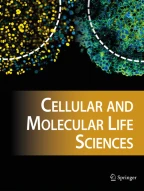Abstract
In the central nervous system, various extracellular matrix components have been identified which are strongly expressed during development and in most areas of the brain down-regulated during maturation. Examples are tenascin-C, neurocan and hyaluronan. While tenascin-C is well known to be associated with morphogenic events and the active contribution of hyaluronan to various physiological processes is increasingly acknowledged, neurocan belongs to a class of molecules thought to be generally more associated with barrier functions: chondroitin sulfate proteoglycans. Consideration of these and related molecules and their processing in the context of the general organization of the brain extracellular matrix, their changes during brain maturation and their implication in different types of remodeling processes in adult brain, like normal and pathological synaptic plasticity, inflammatory and dementia-associated diseases and gliomas, may indicate that components of the extracellular matrix could provide valuable early information about the pathological state of the brain.
Similar content being viewed by others
Author information
Authors and Affiliations
Corresponding author
Additional information
Received 29 January 2004; received after revision 25 March 2004; accepted 2 April 2004
Rights and permissions
About this article
Cite this article
Rauch, U. Extracellular matrix components associated with remodeling processes in brain. CMLS, Cell. Mol. Life Sci. 61, 2031–2045 (2004). https://doi.org/10.1007/s00018-004-4043-x
Issue Date:
DOI: https://doi.org/10.1007/s00018-004-4043-x
